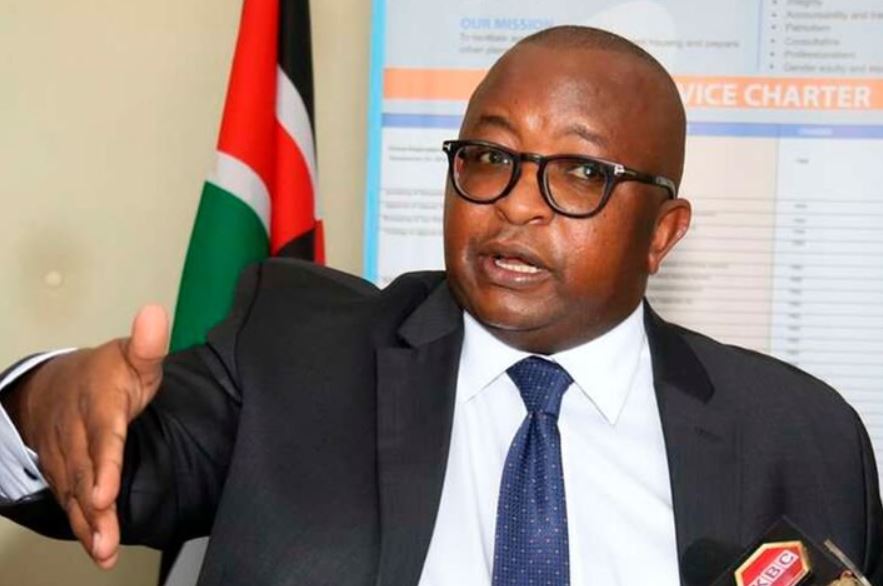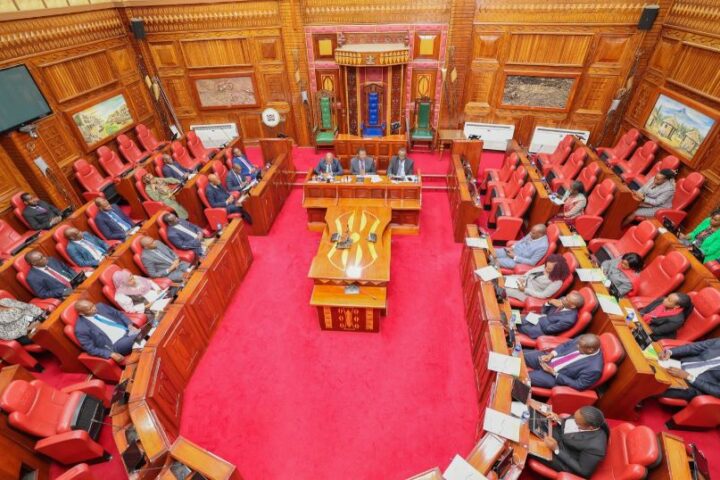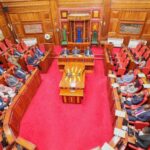
Since April 2020 when the president assented to the amended Section 38 of the Retirement Benefits Act (1997), would you say that there has been an uptick in applications for a mortgage for access to affordable housing? Joseph Mwaura, Mwiki
The amendment to Section 38 of the Retirement Benefits Act (1997) allows partial access of retirement benefits for purposes of purchase of a residential house. This amendment was aimed at increasing homeownership in the country because it allows those with pension benefits to use these funds for a deposit payment or to further reduce their borrowing needs when buying a home.
Enacting this law required further amendment to The Retirement Benefits (Mortgage Loan) Regulations so as to give clear parameters on how those with pension benefits can access the funds. The amendments to the regulations were gazetted on 14th September 2020 and they stipulated that Kenyans can access up to 40 per cent of their accrued benefits for residential house purchase provided the sum shall not exceed Sh7 million shillings. In addition, the funds can only be used towards housing units that are complete.
Further, the gazetted notice provided 12 months for pension schemes to domesticate the regulations and guide their members on how to access the funds. The impact of activating this benefit will thus take a bit of time as pension funds put in place the mechanisms and housing units come into the market.
What would you say of the achievements of the Nairobi Metropolitan Services Improvement Project (NaMSIP) thus far? Could NaMSIP be a way for the national government to take back some devolved functions, notwithstanding the benefits therein? Bernard Mule, Katani
The Nairobi Metropolitan Services Improvement Project was a US$330 million metro-wide urban development initiative under the State Department for Housing and Urban Development, financed through the national government and the International Development Association (IDA), World Bank. It was declared effective on December 17, 2012, and ended on September 30, 2020.
The project was implemented in collaboration with five county governments in the Nairobi Metropolitan Region (NMR) namely Nairobi, Kiambu, Machakos, Kajiado and Murang’a.
NaMSIP’s work was centred on providing necessary support to strengthen urban service and infrastructure in the NMR. The projects that were undertaken were conceptualised in collaboration with parties involved, and responsible for, urban development at national and county government level.
This means that NaMSIP improved upon the ability of these entities to deliver urban infrastructure, and particularly on projects, that traversed service delivery across the metropolitan region. The programme as envisioned was successfully undertaken and its projects delivered.
Since the roll out of the president’s legacy project of affordable housing, there has been lots of communication from your ministry on how ordinary Kenyans can participate in this agenda. What is the role of the Kenya Mortgage Refinance Company (KMRC) in this whole scenario? How can ordinary Kenyans reap from the benefits accruing from this? Komen Moris, Eldoret
The Kenya Mortgage Refinance Company (KMRC) was established to enhance the affordability of mortgages through the provision of secondary liquidity for financial institutions providing affordable mortgages, thereby leading to a greater uptake in home financing.
This means that KMRC works with banks, Saccos, other qualified financial institutions to refinance their mortgage loan portfolios and free up capital that can be used to lend more money to those seeking to buy homes. Qualified mortgage lenders working with KMRC are also able to extend mortgages to homebuyers that have longer tenures (20 years and above) and fixed interest rates that are below 10 per cent.
Ordinary Kenyans accrue benefit because local banks and Saccos, working with KMRC, can now offer mortgage products with fixed interest rates that are below 10 per cent and with long repayment periods (20 years and above), ensuring that monthly payments are manageable.
I am disappointed in the manner the affordable housing in Pangani have been developed. The developers have deliberately conned investors by building nest-like duplex apartments which may not even be big enough for even small- sized family yet they are selling them for a whopping Sh7.5 million. What is your take? PG Gikonyo, a potential Investor
The affordable housing programme was developed with the aim of delivering decent and adequate housing in the affordable segment of the housing value chain. One of the strategies adopted was to develop affordable housing projects that have both affordable and market-rate units.
In this scenario, an affordable housing project will have a set of units whose price range is between Sh1.5 million and Sh3 million representing the affordable portion. The units in the affordable range also have standardised areas of up to 60 square metres. The developments will also have a portion with higher priced units that have larger unit sizes outside of the affordable range. Typically, these units will also include more costly finishes as well.
The Pangani Housing Project adopted a similar model, whereby out of the 1,562 housing units, 952 were in the affordable range while the remaining 610 units were market rate units. The units in the affordable range were sold out within a month of the project announcing sales, and only market rate units are available for sale now. We expect that as more projects come online, there will be opportunity to purchase affordable housing units.
Given that the majority of Kenyans cannot afford or are not eligible for bank mortgages, how can the public be facilitated to acquire homes through an affordable long-term tenant purchase scheme that will be accessible or affordable to the majority of middle-income Kenyans? Paul Gesimba, Nairobi
The development of a long-term tenant purchase scheme requires the establishment of an institution that can pool resources from many Kenyans. In a Tenant Purchase Scheme (TPS), home buyers sign an agreement with the institution that is running the TPS whereby they will pay for the unit using a monthly rate over a long period of time, between 20 to 25 years. Typically, the monthly rate is as close to a rental payment as possible.
The establishment of this TPS product would require many people to save within the National Housing Development Fund (NHDF) so that there is sufficient capital to buy units on behalf of the members, and then extend cheaper financing that allows them to make payments on a monthly basis.
Through Boma Yangu, the NHDF has over 300,000 members who have saved Sh1.43 billion. While this is encouraging, NHDF requires a strategy to increase the amount of capital that can be availed for TPS. If the membership would save more in the NHDF, then there would more money to buy units, and more opportunities provided for members to make monthly payments over time through the TPS.
Additionally, the government is exploring proposals to provide funding through the NHDF for TPS to be offered to more members. Capitalising the NHDF so that it can increase the amount of capital available to purchase units for TPS, is one way that there can be more availability for ordinary Kenyans.
It appears that in the development of affordable and decent houses your department focuses only on civil servants and other formally employed and working Kenyans who, among others, can easily access credit to acquire the same. What plans do you have for the majority in the informal sector and the jobless lot who also equally deserve to be well sheltered as per the dictates of the Bills of Rights of our Constitution? Dan Murugu, Nakuru City
The focus on provision of housing for civil servants is premised on the fact that the government is an employer obligated under the Employment Act to provide housing for its workers close to their places of work. In fulfillment of this obligation, therefore, the government urges other employers to do the same and contribute to the affordable housing agenda.
The government also has been championing the development of affordable housing for all Kenyans as stipulated in the Constitution of Kenya under Article 43 which prescribes the right of every Kenyan to access decent and affordable housing. The affordable housing programme leverages the private sector to deliver affordable homes with pricing that is accessible to most Kenyans.
Under this programme, housing units are priced under Sh3 million which is more suitable to workers in the lower income brackets. The programme has a rich pipeline of over 56,000 units which will be completed over the next few years.
Providing affordable home financing solutions is also a key focus for the government and the programme has been working with financial institutions to develop financing mechanisms that take into consideration the financial context of those in the informal sector. In addition, government is working on proposals to provide funding through the National Housing Development Fund (NHDF) for Tenant Purchase Scheme (TPS) to be offered to more members.
How did the pandemic affect the realisation of the affordable housing agenda? How has your ministry tried to mitigate these challenges? Komen Moris, Eldoret
The impact of Covid-19 on all sectors of our economy has been great. It has been challenging for capital intensive projects as fiscal constraints have required funds to be channelled towards those projects that directly manage the public health concerns of the pandemic as well as social protection mechanisms to safeguard the most vulnerable members of society.
During the pandemic, it emerged that the construction sector was going to be one of the hardest-hit sectors due to difficulties in raising funds for capital projects. However, it was also projected to be one of those whose recovery could be fastest. In our context, we find that recovery in the construction sector has been quite strong.
A recent analysis of registered projects by the National Construction Authority noted that a total of 23,269 housing projects, with over 224,000 units, were registered across the country in all the 47 counties from 1st January 2017 to end of October 2021. The projects have a cumulative contract sum amounting to Sh2.3 trillion representing a substantial investment in housing. These statistics indicate to us that, across private and public sector, our ambition and efforts to provide decent and adequate housing are slowly taking root.
The Affordable Housing Programme has effectively adopted an approach that seeks to leverage available private sector funding and creating a conducive business environment for the building and construction sector to engage in affordable housing projects. As a result, AHP has a rich active pipeline of over 564,000 projects that will transform the affordable housing segment. Among these are over 130,000 units to be delivered through private sector projects over the next three to five years. These ongoing and planned projects bring hope to those who are seeking affordable housing.
Since 2017, most townships and small towns in Kenya have been craving to be elevated to municipalities status. In my own view, the Urban Areas and Cities Act, 2011, was amended in 2019 due to vested political reasons to vary criteria on population from 250,000 to 50,000 people which now makes it easy for such urban centres to be elevated to municipal status. What can you say is the best way forward in this matter, to elevate or not elevate? Dan Murugu, Nakuru City
At present, based on the Urban and Areas Cities Act, there are clear guidelines on how towns may qualify for municipal status. These guidelines note that it takes more than population for a town to become a municipality as there are other institutional factors which must be considered.
First, towns seeking municipal status must have an integrated urban area or city development plan which would guide investment in growth, development, and expansion for the area. These plans should be connected to other planning mechanisms such as the County Integrated Development Plan and others.
Second, towns must also show that there is sufficient economic activity to generate revenue that can sustain municipal operations. Oftentimes, towns must create conducive environments for commercial activity which will in turn generate revenue in the form of taxes, fees, levies, and other mechanisms.
It is important to note that attracting businesses and new residents is related to the capacity to deliver essential services such as housing, water and sanitation, ambulance services, health facilities, and even other social infrastructure such as schools, parks, libraries, etc. Demonstrating the capacity to provide all these services independently requires some investment in urban infrastructure which may take some time for some areas.
Indeed, towns must demonstrate that there is sufficient land for growth over time. If a town does not have sufficient land to accommodate increase in commercial activity and resident populations, then of course, the potential to expand and attract investment will be capped.
In addition, our Constitution requires public participation in all affairs. This requirement is also passed down in the development and governance of urban areas. Therefore, for towns seeking to graduate to municipal status, there is a requirement for them to demonstrate that they have mechanisms for participation of residents. Besides fulfilling the above, there is also a legal process for approval of municipal status which requires actions from the County Government and County Assemblies.
The path from town to municipal status requires the establishment of strong institutions that can manage urban service delivery and coordinate activities with residents and with the County and National Governments. It also requires substantial investments in infrastructure as well as growth in economic activity. Many towns are in the process of establishing this core foundation for prosperity. Over the next few years, there should be more areas that are able to fulfill these requirements.
The entire NaMSIP project should cost $330 million with the government contributing up to $30 million. Would you say what percentage of these funds have been raised and the financial challenges NaMSIP could be facing? Michael Mwenda, Nairobi
The Nairobi Metropolitan Services Improvement Project (NaMSIP) was a US$330 million metro-wide urban development initiative under the State Department for Housing and Urban Development, financed through the National Government of Kenya and the International Development Association (IDA), World Bank.
NaMSIP was declared effective on December 17, 2012, with an initial closing date of June 30, 2017, which was revised to September 30, 2020. The funding mechanisms were thus finalised prior to the project being declared effective in December 2012.
Since then, NaMSIP has undertaken 120 projects in the improvement of road networks and stormwater drainage, solid waste management, market spaces development, sewerage and sanitation, security through improvement of street lighting, development of non-motorised transport (NMT) walkways such as footpaths and bicycle lanes, and re-development of railway stations. The project also provided institutional strengthening support leading to the development of master plans, progress in physical addressing systems, and other planned land-use activities.








